Information injection-pump assembly
BOSCH
9 400 611 164
9400611164
ZEXEL
101605-9621
1016059621
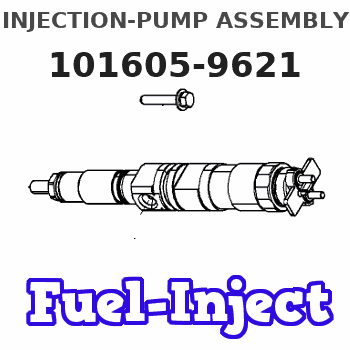
Rating:
Include in #1:
101472-0120
as _
Cross reference number
BOSCH
9 400 611 164
9400611164
ZEXEL
101605-9621
1016059621
Zexel num
Bosch num
Firm num
Name
9 400 611 164
DAEWOO
INJECTION-PUMP ASSEMBLY
DB58T K 14BE INJECTION PUMP ASSY PE6A PE
DB58T K 14BE INJECTION PUMP ASSY PE6A PE
Calibration Data:
Adjustment conditions
Test oil
1404 Test oil ISO4113 or {SAEJ967d}
1404 Test oil ISO4113 or {SAEJ967d}
Test oil temperature
degC
40
40
45
Nozzle and nozzle holder
105780-8140
Bosch type code
EF8511/9A
Nozzle
105780-0000
Bosch type code
DN12SD12T
Nozzle holder
105780-2080
Bosch type code
EF8511/9
Opening pressure
MPa
17.2
Opening pressure
kgf/cm2
175
Injection pipe
Outer diameter - inner diameter - length (mm) mm 6-2-600
Outer diameter - inner diameter - length (mm) mm 6-2-600
Overflow valve
131424-1520
Overflow valve opening pressure
kPa
157
123
191
Overflow valve opening pressure
kgf/cm2
1.6
1.25
1.95
Tester oil delivery pressure
kPa
157
157
157
Tester oil delivery pressure
kgf/cm2
1.6
1.6
1.6
Direction of rotation (viewed from drive side)
Right R
Right R
Injection timing adjustment
Direction of rotation (viewed from drive side)
Right R
Right R
Injection order
1-5-3-6-
2-4
Pre-stroke
mm
3.4
3.35
3.45
Beginning of injection position
Drive side NO.1
Drive side NO.1
Difference between angles 1
Cal 1-5 deg. 60 59.5 60.5
Cal 1-5 deg. 60 59.5 60.5
Difference between angles 2
Cal 1-3 deg. 120 119.5 120.5
Cal 1-3 deg. 120 119.5 120.5
Difference between angles 3
Cal 1-6 deg. 180 179.5 180.5
Cal 1-6 deg. 180 179.5 180.5
Difference between angles 4
Cyl.1-2 deg. 240 239.5 240.5
Cyl.1-2 deg. 240 239.5 240.5
Difference between angles 5
Cal 1-4 deg. 300 299.5 300.5
Cal 1-4 deg. 300 299.5 300.5
Injection quantity adjustment
Adjusting point
A
Rack position
9.1
Pump speed
r/min
1100
1100
1100
Average injection quantity
mm3/st.
73.5
72
75
Max. variation between cylinders
%
0
-2.5
2.5
Basic
*
Fixing the lever
*
Boost pressure
kPa
40
40
Boost pressure
mmHg
300
300
Injection quantity adjustment_02
Adjusting point
-
Rack position
6.8+-0.5
Pump speed
r/min
485
485
485
Average injection quantity
mm3/st.
9.4
8.1
10.7
Max. variation between cylinders
%
0
-14
14
Fixing the rack
*
Boost pressure
kPa
0
0
0
Boost pressure
mmHg
0
0
0
Remarks
Adjust only variation between cylinders; adjust governor according to governor specifications.
Adjust only variation between cylinders; adjust governor according to governor specifications.
Injection quantity adjustment_03
Adjusting point
E
Rack position
-
Pump speed
r/min
90
90
90
Average injection quantity
mm3/st.
65
65
85
Fixing the lever
*
Boost pressure
kPa
0
0
0
Boost pressure
mmHg
0
0
0
Rack limit
*
Boost compensator adjustment
Pump speed
r/min
500
500
500
Rack position
R1-0.25
Boost pressure
kPa
20
17.3
22.7
Boost pressure
mmHg
150
130
170
Boost compensator adjustment_02
Pump speed
r/min
500
500
500
Rack position
R1(9.1)
Boost pressure
kPa
26.7
26.7
26.7
Boost pressure
mmHg
200
200
200
Test data Ex:
Governor adjustment
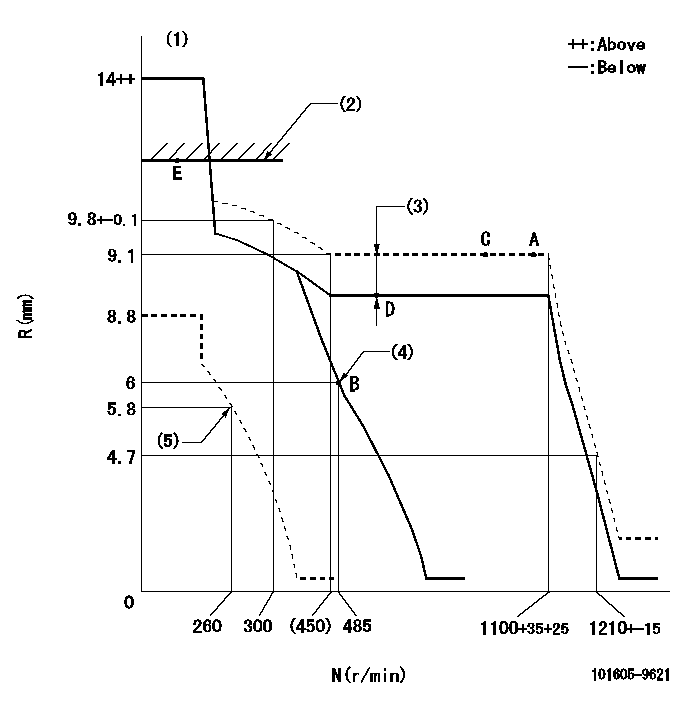
N:Pump speed
R:Rack position (mm)
(1)Target notch: K
(2)RACK LIMIT
(3)Boost compensator stroke: BCL
(4)Main spring setting
(5)Set idle sub-spring
----------
K=7 BCL=0.25+-0.1mm
----------
----------
K=7 BCL=0.25+-0.1mm
----------
Speed control lever angle
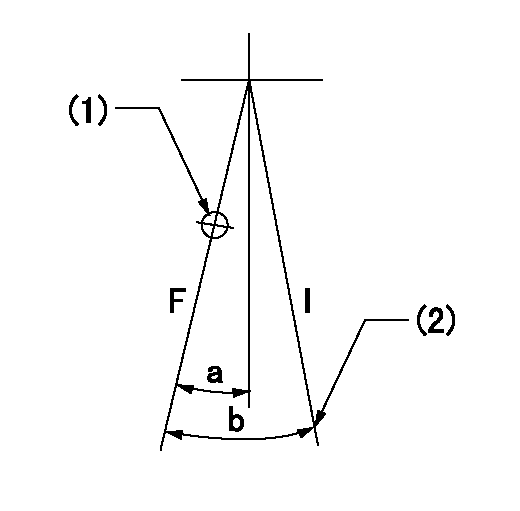
F:Full speed
I:Idle
(1)Use the hole at R = aa
(2)Stopper bolt setting
----------
aa=70mm
----------
a=(1deg)+-5deg b=(18deg)+-5deg
----------
aa=70mm
----------
a=(1deg)+-5deg b=(18deg)+-5deg
Stop lever angle
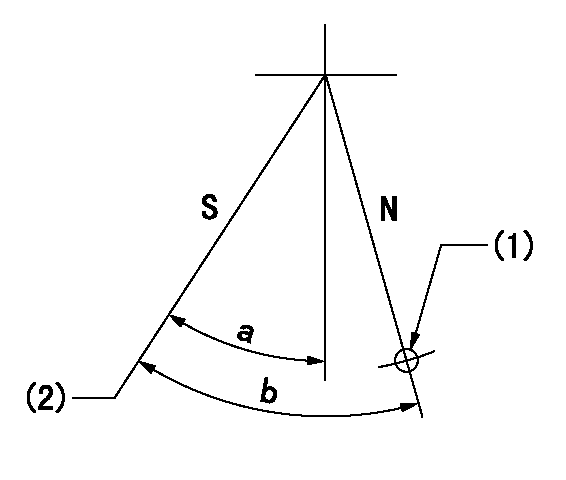
N:Pump normal
S:Stop the pump.
(1)Use the hole at R = aa
(2)Speed = bb, rack position = cc (sealed at delivery)
----------
aa=40mm bb=0r/min cc=1-0.5mm
----------
a=44.5deg+-5deg b=(50deg)
----------
aa=40mm bb=0r/min cc=1-0.5mm
----------
a=44.5deg+-5deg b=(50deg)
Timing setting
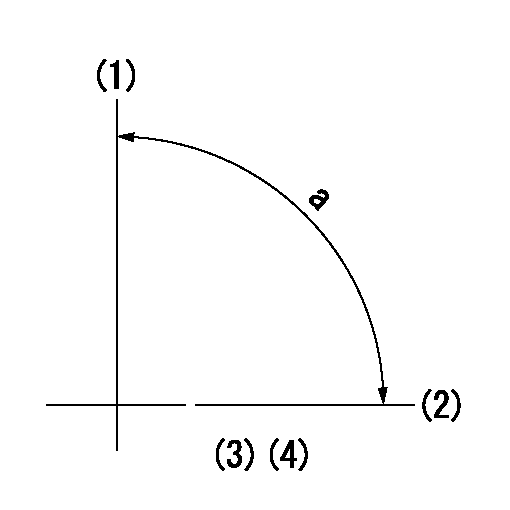
(1)Pump vertical direction
(2)Position of gear mark 'CC' at No 1 cylinder's beginning of injection
(3)B.T.D.C.: aa
(4)-
----------
aa=13deg
----------
a=(90deg)
----------
aa=13deg
----------
a=(90deg)
Information:
Downhill
When cresting a hill, the decision of whether to use power or not on the downside of the hill must be made. Best fuel economy results from using minimum power to get back to speed after climbing a grade. However, care must be taken not to allow the engine to overspeed. This engine should not exceed 2300 rpm.If equipped with an exhaust brake, the engine should not exceed maximum braking rpm. Refer to "Auxilliary Exhaust Brakes" section of this manual.Saving Fuel On Hills
Rolling hills provide a great opportunity to reduce fuel. Avoid downshifting on small hills. If a hill can be topped without downshifting, even if the engine lugs to the peak torque rpm (1100-1200), the truck should not be downshifted.On long grades that require one or more downshifts, let the engine lug back to the peak torque rpm. If road speed stabilizes with the engine running at or above peak torque rpm, remain in that gear. When going down hill, use gravity instead of engine power to regain vehicle speed.Long steep down grades should be anticipated. Vehicle speed should be reduced before cresting the top of a hill and proceeding down a long steep grade. The way to achieve maximum fuel efficiency, is to minimize the amount of braking that is used to maintain a safe vehicle speed.The engine's ability to hold the truck back increases with engine speed. A gear should be selected that runs the engine near the high engine rpm limit for long steep hills when braking is required.Speed reductions and future stops should be anticipated ahead of time to save fuel. Downshifts should be avoided and the amount of braking minimize
When cresting a hill, the decision of whether to use power or not on the downside of the hill must be made. Best fuel economy results from using minimum power to get back to speed after climbing a grade. However, care must be taken not to allow the engine to overspeed. This engine should not exceed 2300 rpm.If equipped with an exhaust brake, the engine should not exceed maximum braking rpm. Refer to "Auxilliary Exhaust Brakes" section of this manual.Saving Fuel On Hills
Rolling hills provide a great opportunity to reduce fuel. Avoid downshifting on small hills. If a hill can be topped without downshifting, even if the engine lugs to the peak torque rpm (1100-1200), the truck should not be downshifted.On long grades that require one or more downshifts, let the engine lug back to the peak torque rpm. If road speed stabilizes with the engine running at or above peak torque rpm, remain in that gear. When going down hill, use gravity instead of engine power to regain vehicle speed.Long steep down grades should be anticipated. Vehicle speed should be reduced before cresting the top of a hill and proceeding down a long steep grade. The way to achieve maximum fuel efficiency, is to minimize the amount of braking that is used to maintain a safe vehicle speed.The engine's ability to hold the truck back increases with engine speed. A gear should be selected that runs the engine near the high engine rpm limit for long steep hills when braking is required.Speed reductions and future stops should be anticipated ahead of time to save fuel. Downshifts should be avoided and the amount of braking minimize